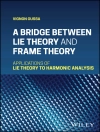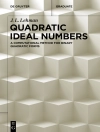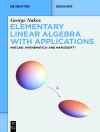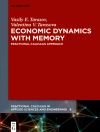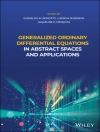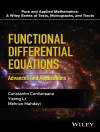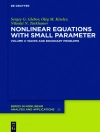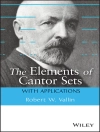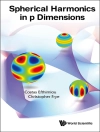This book presents an introduction to the principles of the fast Fourier transform. This book covers FFTs, frequency domain filtering, and applications to video and audio signal processing.
As fields like communications, speech and image processing, and related areas are rapidly developing, the FFT as one of essential parts in digital signal processing has been widely used. Thus there is a pressing need from instructors and students for a book dealing with the latest FFT topics.
This book provides thorough and detailed explanation of important or up-to-date FFTs. It also has adopted modern approaches like MATLAB examples and projects for better understanding of diverse FFTs.
Inhaltsverzeichnis
Preface. Acknowledgements. Acronyms.1 Introduction. 1.1 Applications of Discrete Fourier Transform.2 Discrete Fourier Transform. 2.1 Definitions. 2.2 The Z-transform. 2.3 Properties of the DFT. 2.4 Convolution Theorem. 2.5 Correlation Theorem. 2.6 Overlap-Add and Overlap-Save Methods. 2.7 Zero Padding in the Data Domain. 2.8 Computation of DFTs of Two Real Sequences Using One Complex FFT. 2.9 A circulant matrix is diagonalized by the DFT matrix. 2.10 Summary. Projects. Problems.3 Fast Algorithms. 3.1 Radix-2 DIT-FFT. 3.2 Fast Algorithms by Sparse Matrix Factorization. 3.3 Radix-2 DIF-FFT. 3.4 Radix-3 DIT-FFT. 3.5 Radix-3 DIF-FFT. 3.6 FFT for N a Composite Number. 3.7 Radix-4 DIT-FFT. 3.8 Radix-4 DIF-FFT. 3.9 Split-Radix FFT Algorithm. 3.10 Fast Fourier and BIFORE Transforms by Matrix Partitioning. 3.11 The Winograd Fourier Transform Algorithm. 3.12 Sparse Factorization of the DFT Matrix. 3.13 Unified Discrete Fourier-Hartley Transform. 3.14 Bluestein’s FFT Algorithm. 3.15 Rader Prime Algorithm. 3.16 Summary. Projects. Problems.4 Integer Fast Fourier Transform. 4.1 Introduction. 4.2 Lifting Scheme. 4.3 Integer FFT. 4.4 Integer Discrete Fourier Transform. 4.5 Summary. Projects. Problems.5 Two-Dimensional Discrete Fourier Transform. 5.1 Definitions. 5.2 Properties. 5.3 Two-Dimensional Filtering. 5.4 Inverse and Wiener Filtering. 5.5 Three-Dimensional DFT. 5.6 Variance Distribution in the 1-D DFT Domain. 5.7 Sum of variances under orthogonal transformation is invariant. 5.8 Variance Distribution in the 2-D DFT Domain. 5.9 Quantization of transform coefficients can be based on their variances. 5.10 Maximum Variance Zonal Sampling (MVZS). 5.11 Geometrical Zonal Sampling (GZS). 5.12 Summary. Projects. Problems.6 Vector-Radix 2-D FFT Algorithm. 6.1 Vector Radix DIT-FFT. 6.2 Vector Radix DIF-FFT. 6.3 Summary. Projects. Problems.7 Nonuniform DFT. 7.1 Introduction. 7.2 One-Dimensional NDFT. 7.3 Fast Computation of NDFT. 7.4 Two-Dimensional NDFT. 7.5 Filter Design Using NDFT. 7.6 Summary. Problems.8 Applications. 8.1 Frequency Domain Downsampling. 8.2 Fractal Image Compression. 8.3 Phase Only Correlation. 8.4 Image Rotation and Translation Using DFT/FFT. 8.5 Intraframe Error Concealment. 8.6 Surface Texture Analysis. 8.7 FFT-Based Ear Model. 8.8 Image Watermarking. 8.9 Audio Watermarking. 8.10 OFDM. 8.11 FFT Processors for OFDM. 8.12 DF DFT-Based Channel Estimation Method. 8.13 The Conjugate-Gradient Fast Fourier Transform (CG-FFT). 8.14 Modified Discrete Cosine Transform (MDCT). 8.15 Oddly Stacked TDAC. 8.16 Preceptual Transform Audio Coder. 8.17 OCF Coder. 8.18 NMR Measurement System. 8.19 Audio Coder for Mobile Reception. 8.20 ASPEC. 8.21 RELP Vocoder. 8.22 Homomorphic Vocoders. 8.23 MUSICAM. 8.24 AC-2 Audio Coder. 8.25 IMDCT/IMDST Implementation via IFFT. 8.26 MDCT/MDST Implementation via IFFT. 8.27 Autocorrelation Function and Power Density Spectrum. 8.28 Three-Dimensional Face Recognition. 8.29 Two-Dimensional Multirate Processing. 8.30 Fast Uniform Discrete Curvelet Transform. 8.31 Problems. 8.32 Projects.Appendix A: Performance Comparison of Various Discrete Transforms. A.1 Transform Coding Gain. A.2 Variance Distribution in the Transform Domain. A.3 Normalized MSE. A.4 Rate Versus Distortion. A.5 Residual Correlation. A.6 Scalar Wiener Filtering. A.7 Geometrical Zonal Sampling. A.8 Maximum Variance Zonal Sampling.Appendix B: Spectral Distance Measures of Image Quality. Project B.Appendix C: Integer Discrete Cosine Transform. C.1 Integer DCT Via Lifting. C.2 Integer DCT by the Principle of Dyadic Symmetry. Problems. Projects.Appendix D: DCT and DST. D.1 Kernels for DCT and DST. D.2 Derivation of Unitary DCTs and DSTs. D.3 Circular Convolution Using DCTs and DSTs Instead of FFTs. D.4 Circular Shifting Property of the DCT. Problems. Projects.Appendix E: Kronecker Products and Separability. E.1 Kronecker Products. E.2 Generalized Kronecker Product. E.3 Separable Transformation.Appendix F: Mathematical Relations. Problem.Appendix G: Basics of MATLAB. G.1 List of MATLAB Related Websites. G.2 List of MATLAB Related Books.Appendix H. H.1 MATLAB Code for 15-Point WFTA. H.2 MATLAB Code for Phase only Correlation.Bibliography. Index.
Über den Autor
Prof. K. R. Rao received the Ph. D. degree in electrical engineering from The University of New Mexico, Albuquerque in 1966. Since 1966, he has been with the University of Texas at Arlington where he is currently a professor of electrical engineering. He, along with two other researchers, introduced the Discrete Cosine Transform in 1975 which has since become very popular in digital signal processing. Some of his books have been translated into Japanese, Chinese, Korean and Russian. He has conducted workshops/tutorials on video/audio coding/standards worldwide. He has published extensively in refereed journals and has been a consultant to industry, research institutes and academia. He is a Fellow of the IEEE.



